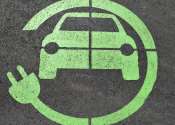Volkswagen and Mercedes sign EV battery accords with Canada
Canada announced Tuesday tentative deals with Volkswagen and Mercedes-Benz that would see the two European automakers tap into burgeoning North American supply chains as they seek to challenge Tesla in the electric vehicle ...
Aug 23, 2022
0
22









